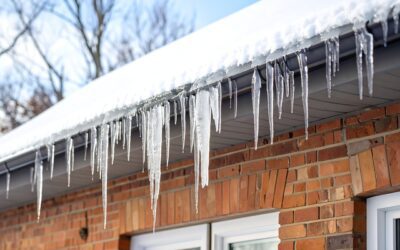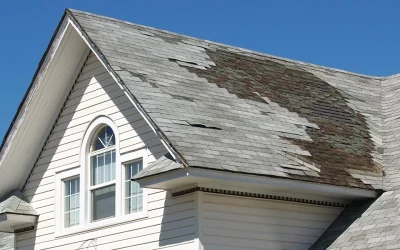How To Deter Woodpeckers and Protect Your Indiana Home
You hear them well before you see them, the incessant tap-tap-tapping somewhere on the outside of your home. Perhaps the drilling is somewhere around your chimney, or on your roof. A quick glance out of a window or a cursory inspection of your exterior confirms your suspicions…woodpeckers have chosen your home to do their business, and you now have a problem on your hands.
Or perhaps you’ve tried everything you can think of already. You’ve wasted time and money, you’ve repaired and painted over endless holes, and just want it to stop.
Woodpeckers: A Primer
Woodpeckers come in a variety of colors including black, red, white and yellow, and can range in size from a manageable 2.5 inches, to a respectable 20”. Many members of the species are two toed, and have longer talons and larger bills for birds of that size group. Their habitats are wherever trees are, and their tapping rate can be as fast as 20 times per second.
Woodpeckers can be found on every continent except Australia and Antarctica, and the largest members of the species will relegate themselves to Indiana’s most heavily wooded areas, and are seldom seen where people are. For that matter, while woodpeckers are a continuing nuisance, it is to be remembered that they pose no risk whatsoever to human beings, and carry no communicable diseases.
Woodpeckers are protected by the Migratory Bird Act of 1918 and as such, it is against federal law to kill or injure species protected by the act without direct authorization by the Dept. of Interior U.S. Fish and Wildlife Service.
This flies in the face of countless homeowners who consider them noisy, expensive, destructive pests, but as we read on, it will quickly become clear why the species is so important in terms of our ecosystem and biodiversity.
Repelling Woodpeckers – Where to Start
Before we can understand how to get rid of woodpeckers and the inevitable woodpecker holes, we need to understand why woodpeckers behave as they do. Woodpeckers hammer on trees, homes and other surfaces for four basic reasons:
Woodpeckers are most prevalent in Indiana in the spring
The rapid-fire, rhythmic “drumming” noise woodpeckers make can happen multiple times a day, over the course of weeks and even months, and serves to mark their territory, and attract a mate. This behavior is most prevalent during mating season which, in Indiana, begins around the end of March, and can continue through the month of April, before peaking sometime around the middle or end of May.
Don’t try to remove woodpeckers during the the spring
Concurrent with mating season is the time for nesting and tending eggs. Woodpeckers will drill holes in trees, homes or other appropriate structures to build nests and roosting holes. This is an extremely important point of knowledge. If homeowners wish to remove woodpeckers from their property, it is vital that any action be taken before or after mating season, not during.
Woodpeckers might be feeding on insects within your siding
Woodpeckers feed on insects like ants and carpenter bee larvae found ensconced in trees, and underneath the wooden surfaces and siding of residential structures. Woodpeckers drill small holes into these areas for the sake of getting access to these tasty morsels.
Woodpeckers might also be storing food in your siding
Finally, woodpeckers drill holes into surfaces to store their food. The Acorn Woodpecker is particularly notorious for this behavior, and will leave dozens of small holes in trees and homes as a place to stash acorns and other food for future consumption.
6 Steps to Get Rid of Woodpeckers Legally and Humanely
So, armed with our new understanding of why woodpeckers do what they do, the question becomes how do we use this knowledge to prevent expensive and unsightly woodpecker damage to our homes? There are steps we can take to discourage woodpeckers from demolishing our homes, backyard trees, and other structures. In order to have the best chance at repelling woodpeckers, we want to work systematically.
Please remember: it is harmful, and therefore illegal in the state of Indiana, to remove woodpeckers from nesting areas during mating season. Any actions taken should happen before or after that time.
1. Identify Woodpecker Damage
When confirming a woodpecker problem, over and above the incessant noise of drumming on gutters, drainpipes, and chimneys, we want to look for holes. Woodpeckers are particularly attracted to wooden siding; especially cedar and redwood, because of the insects and larvae they will find nested underneath. There is also likely to be damage to live trees, and the removal of any nuts, berries or fruit from any trees that bear fruit.
This is an excellent time to consider upgrading your exterior siding with qualified service providers like Kingdom Roofing Systems. Doing so can better address potential woodpecker damage and other wildlife damage to a house, and also minimize the damage sustained from the elements. Having damage resistant James Hardie siding installed on your home is a tactical edge in the battle of woodpecker prevention for homeowners. Made of water, cement, sand and fibers, James Hardie siding has no wood to attract woodpeckers in the first place, and is fire and water resistant.
2. Remove Food Sources
Examination of the holes left by woodpeckers can confirm where they are drilling specifically for food. If the holes are small, deep, and neatly arranged on rows, this is an indication of woodpeckers who are after the insects and insect nests that form a large portion of their diet. There will also be evidence of recent meals in the form of dead insects and other detritus near these holes.
Once established, the next step is to remove these sources by way of extermination efforts, taking care to ensure that any pesticides used are not harmful to the birds, wildlife, or pets and family members.
3. Decoys and Misdirection
Once we have eliminated undesirable food sources, we can further divert woodpeckers to feeders that we have set up, and that offer alternative food sources that can help keep them from our siding and roofs, while still being able to enjoy their natural beauty.
Woodpeckers love suet, and using a suet laden feeder to gradually lure the birds away from our homes by moving the feeder or feeders further and further away over time will all but train the birds to avoid your home.
We also want to introduce decoys, light and movement to our strategy. These natural deterrents can actually be a fun family or home project, since many of the devices used to frighten woodpeckers and dissuade them from hammering on our homes and trees are quite visually appealing.
The most direct angle of attack is the use of decoy owls, which prey on woodpeckers and will discourage them from coming around. This tactic has a shelf life, since woodpeckers will eventually realize the deception and return in a relatively short period of time.
Moving the decoys around every few days can extend the usefulness of this method. We can also use reflective tape, and even old CD/DVDs to reflect the glare of the sun into the sensitive eyes of the woodpecker and keep them away. These materials will dull over time and lose their effectiveness.
4. Bird Netting
For larger areas, or for when other tactics failed, consider woodpecker netting. While more obtrusive visually, this is an excellent approach that is designed specifically for use in residential structures for the purpose of deterring woodpeckers. Be sure to select quality netting that is rot-, UV-, and water-proof, to extend the life of the netting, and minimize the amount of maintenance needed. Be aware that some woodpeckers are quite large and the netting should be constructed to withstand that. Bat netting is a good choice that will serve the purpose nicely.
5. Tree Wrapping
We have discussed how to stop woodpeckers from pecking your house, but we also want to consider the damage of woodpeckers to the trees around our property and the surrounding areas. While the pecking of woodpeckers will not directly kill a tree, the damage they do will provide opportunities for fungus, bacteria and parasites to weaken and ultimately compromise the tree. There are several types of burlap and synthetic wraps on the market that can be used to not only keep woodpeckers from gripping the bark of the tree to peck at it, it can also protect trees from the elements and adverse weather conditions.
6. Removal and Landscaping
Finally, we consider actual removal of nearby trees from our home. The lack of cover, shade, and nesting opportunities will organically deter woodpeckers from adopting your property as a suitable nesting and mating location.
The greenness of the yard can be maintained by planting smaller bushes, hedges, and creating attractive, landscaped areas to compensate for the lack of trees.
Call Kingdom Roofing Today to Fix and Prevent Woodpecker Damage to Your Home
If you have experienced woodpecker damage to your home, call Indianapolis roofing contractor Kingdom Roofing Systems now to help fix any existing damage to your roof or siding, and to prevent future damage to the exteriors of your Indiana home.






